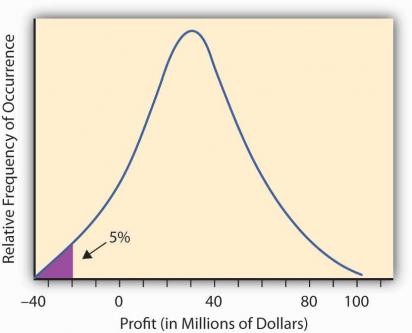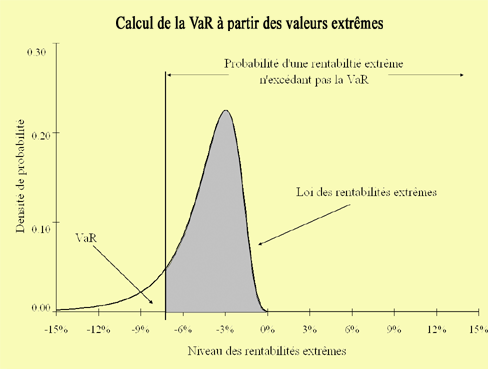Value at Risk (VaR) Definition
Post on: 11 Апрель, 2015 No Comment

Value at risk. or VaR. is a means of measuring the amount of financial risk present in a specific investment, typically a single stock or a portfolio of stocks. There are three main components used to determine the value at risk. First, the time period to be considered is established. This may be a day, a month, or even a year. Next, the overall confidence level of the predictions must be ascertained; this typically requires market research and analysis of historic performance data. Typically confidence levels are set at either 95% or 99% probability. Finally, the maximum loss potential is determined, and the three elements are combined to create a coherent picture of the overall financial risk involved in the investment scheme. Value at risk calculations are intended to provide an overview of likely risk scenarios for investment portfolios.
Value at risk differs from volatility risk assessment in that VaR only considers the possible downward movement of a stock, not any possible increase in its value. Volatility analysis offers a more comprehensive look at up and down movement, which may be useful in some scenarios. In practice, however, investors rarely complain about unexpected upward movements in the value of their stocks, so VaR calculations are typically more useful for general risk assessment in practical terms. VaR is used both as a tool for risk management for investors and a means of measuring potential risk for analysts and investment advisors.
Value at risk equation
Three different methods are used to calculate the probable maximum loss; as a result, there is no single value at risk equation that is applicable in all cases.
- The historical method is derived, as its name suggests, from an evaluation of the past performance of the stock or portfolio of stocks on the assumption that past performance is a fairly accurate predictor of future performance.

A different value at risk equation would be applicable to each of these three methods; results will vary depending on the confidence level required, the length of time measured, and the probable maximum losses as determined by one of the three methods.
Value at risk example
In practice, value at risk is a financial calculation of the worst case scenario for an investment or portfolio of investments. For example, if the time period to be assessed for value at risk for a particular stock is one year, the investment analyst might use historic data for that stock since its inception to generate comprehensive figures for the stocks performance. By using the worst five percent of these results as the maximum loss potential, the analyst can create a value at risk example with a 95% level of confidence. Using only the worst one percent generates a value at risk example with a 99% confidence level, since over the entire life of the stock, its yearly performance has exceeded the maximum loss potential 99% of the time. << Risk Management














